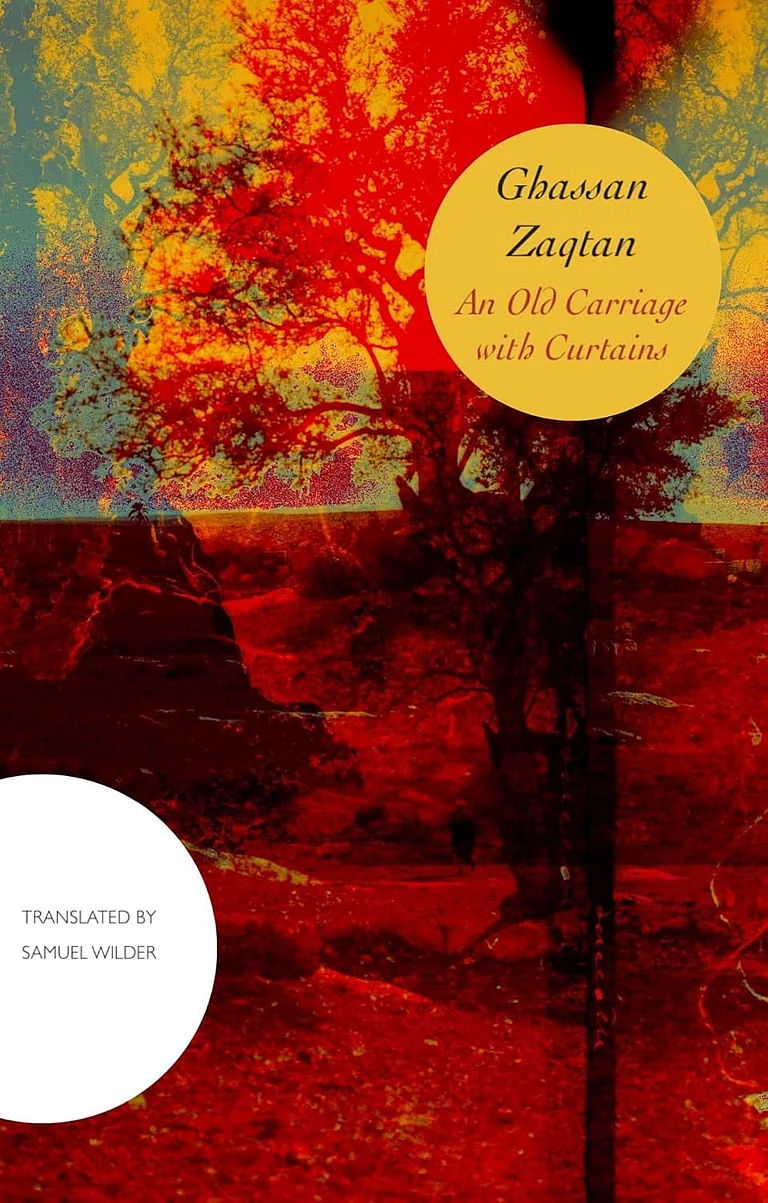This is the cover story for Outlook's 11 January 2024 magazine issue ''We Bear Witness'. To read more stories from the issue, click here
Far away from the turmoil of Israeli airstrikes in the Palestinian territory of Gaza, a heartwarming story of friendship and coexistence unfolds in the charming Jewish neighbourhood of Balat, nestled within the sprawling Turkish megapolis of Istanbul.
Here, Moses Hamon, a Jewish resident, engages in a meaningful conversation about the ongoing war and its far-reaching consequences with his Turkish Muslim neighbour, Mehmet Oktay, in the warm embrace of a cosy café.
Balat, located along the picturesque coast of the Golden Horn, an extension of the famed Bosphorus water channel that gracefully divides the historic city of Istanbul between Europe and Asia, remains one of the city’s best-kept secrets.
Much like Jerusalem, this area has been a melting pot of diverse civilizations and a meeting place for adherents of Abrahamic religions—Jews, Christians, and Muslims. Balat’s streets are adorned with a vibrant palette of colours and embellished with fragrant flowers, creating a true paradise for visitors and a living embodiment of diversity and pluralism.
Jewish scholar Karen Gerson Şarhon reflects on the historical ties that bind the Jewish community to Türkiye. In 1492, when Jews were expelled from Spain following the Alhambra Decree issued by King Ferdinand II and Queen Isabella I, the Ottoman Empire extended its generous hand.
Records reveal that Sultan Bayezid II not only condemned Spain’s actions but also dispatched ships to safely transport Jews to the safety of the Turkish Empire. These newcomers didn’t just seek refuge; they played an integral role in helping the Ottoman Empire establish a robust system for external trade, education, technology, and innovation.
Among the prominent Jewish immigrants was Rabbi Yitzhak Sarfati, a German-born Jew of French heritage. He sent an invitation to European Jewry, urging them to settle in the Ottoman Empire, posing the question, “Is it not better for you to live under Muslims than under Christians?”
During the reign of Mehmed II, commonly known as Mehmed the Conqueror, Jews like Hekim Yakup Pasa, rose to the position of minister of finance. Among others, Moses Hamon and Ishak Pasa were King’s physicians, and Abraham de Castro, the master of the mint.
Jews and Muslims share a few practices such as eating only halal meat, which Jews call kosher, and strictly avoiding consuming pork. In fact, the decree of not eating pork is a Jewish practice that Muslims continue to follow.
Dr Zaful Islam Khan, a renowned scholar who has translated and provided commentary on the Holy Quran in English, observes that Jewish history underwent a discernible shift in the early 20th century with the emergence of Zionism and, even more so, in 1948, with the onset of the Israel-Palestine conflict. Before that, Jewish history books were replete with accounts of the generosity of Muslim rulers who had granted them religious and social freedoms and saved them from the savageries of the West.
One of the most prolific scholars of Jewish scriptures, Rabbi Moses ben Maimon, commonly known as Maimonides, served as the personal physician of Salah ad-Din Yusuf ibn Ayyubi, the founder of the Ayyubid dynasty. Salah ad-Din successfully reconquered the city of Jerusalem, defeating the Crusaders in 1187.
“The Universal Jewish Encyclopedia, published in New York in 1908 and various other works, acknowledge and appreciate Muslim rulers for their role in safeguarding and nurturing the Jewish community, in stark contrast to the treatment of Jews by Christian rulers in Europe,” Dr Khan told Outlook.
Birth of Abraham and Monotheism
The core of three major religions—Judaism, Christianity, and Islam—is that they adhere to monotheism and are opposed to idol worship. They trace their origins back to the Prophet Abraham (Ibrahim), who was born into a family of priests in Babylon around 1996 BC, during the reign of King Namrood, in what is present-day Sanliurfa, in eastern Türkiye, near the borders of Syria and Iraq.
In both Jewish and Islamic traditions, a legendary confrontation between Nimrod and Abraham is recounted. Some tales depict this encounter as a cataclysmic clash, symbolizing the struggle between Good and Evil or monotheism versus polytheism. Nimrod ordered that Abraham be cast into a massive fire, but miraculously, the flames transformed into a pool, and the wood turned into fish. In the Turkish city of Urfa, a pond still stands as a testament to this legend and serves as a popular pilgrimage site.
During this time, Abraham had amassed a following that included Princess Sarah, a member of Babylonian royalty, whom he married. God instructed Abraham and his followers to migrate to the Promised Land, which was known as Canaan or modern-day Palestine. Their caravan, which ultimately reached Palestine, rested at a colossal rock that would later become the Dome of the Rock within the al Aqsa Mosque compound in Jerusalem.
According to the teachings of rabbinic sages responsible for the Talmud, the Dome of the Rock is believed to be the very spot from which God created the world and from which the first human, Adam, was formed, using gathered dust. There are tales, this dust was at two places. Other being the place were Kaaba stands in Mecca.
Throughout history, Palestine held immense strategic significance as a crossroads for trade between Africa, Europe, and Asia, making it a favoured destination for prophets seeking to deliver their messages to diverse populations.
Birth of Rivalry
Legend has it that despite reaching their twilight years, Abraham and Princess Sarah remained childless. Sarah, in her wisdom, suggested that Abraham marry Hajira, an Ethiopian Black slave girl. Following their union, Hajira soon became pregnant. God directed Abraham to take Hajira and leave her in a distant desert far away from the city of Jerusalem. Complying with the divine command, Abraham journeyed with his pregnant wife and left her amidst the dunes, which now correspond to the city of Mecca. At that time, the area was uninhabited.
Sometime later, Hajira gave birth to a son, Ismael. As she desperately searched for water or fire, running between two hillocks, a lost caravan stumbled upon her. Upon hearing her story, the travellers rushed to the spot where Hajira had left the newborn Ismael. To their amazement, a spring had miraculously appeared at the infant’s feet, which we know today as Zamzam. This holy spring continues to quench the thirst of the city of Mecca and holds great significance in the Muslim faith. Ismael went on to become the progenitor of the Arab race, and several millennia later, Prophet Muhammad was born from this lineage.
As Ismael reached adulthood, Abraham returned to Mecca and constructed the Holy Kaaba. By then, the city had evolved into a thriving hub.
Back in Jerusalem, Princess Sarah gave birth to Ishaq, or Izek, who fathered Yaqoob (Arabic), Yehuda or Israel (Hebrew). His sons would go on to establish the 12 Jewish tribes, forging a connection that binds Jews across the globe under the title “sons of Israel”.
The bond between Arabs and Israelis, in a sense, mirrors that of stepbrothers. The lineage from a princess granted a sense of superiority to the Israelis. This perceived superiority prompted Prophet Muhammad to deliver a powerful message in his final sermon, emphasizing equality and rejecting notions of superiority based on race, colour, caste, or creed.
Since both Ismael and Izek are sons of Abraham, who drew lineage from Shem, son of Prophet Noah, the term Semitic applies to both Jews and Arabs.
History often tells tales of sibling rivalry, and so it was with Yaqoob’s youngest son, Yuusuf, or Joseph, who found himself in Egypt as a slave due to the jealousy of his stepbrothers. Yet, fate had grander plans for Joseph, as he ascended to power and invited his father and fellow Israelis to Egypt, offering them refuge and rehabilitation.
After many years, the balance of power shifted in Egypt and the indigenous Coptic community took control. They started oppressing the Israelis. Pharaoh’s decree to drown male Israeli infants in the Nile River was a dark chapter in their history. However, one child, Moses, was placed in an ark and discovered by Pharaoh’s daughter, who raised him as a Coptic.
Moses would later emerge as a central figure in both the Bible and the Quran, leading the Israelites and receiving divine guidance to craft the Torah. His leadership led the Israelis back to the promised land of Palestine, ushering in a golden period for Judaism.
Glorious Era of Solomon and the First Temple
It was during this period that Israelis had powerful rulers like David and Solomon. Around 957 BC, King Solomon constructed the First Temple in Jerusalem. Legends speak of supernatural beings, djinns, aiding in the construction of this magnificent structure.
The Babylonians, however, continued to harbour grievances against the descendants of Abraham. Babylonian King Nebuchadnezzar II marched to Jerusalem and destroyed the city and the First Temple in 586 B.C. Thousands of Jews were massacred, and those who survived were carried away as slaves.
After many years as the Babylonian Empire waned, the Persian Empire rose to prominence. Cyrus the Great, King of Persia, liberated the Jews from captivity, aiding in their return to Palestine and the reconstruction of the Temple, though in a more modest form. Subsequently, the Second Temple underwent expansion and refurbishment under the reign of Herod the Great, becoming a grand and imposing structure.
Crucifixion and Roman Conquest
The period of Christ’s life brought profound changes, and according to some beliefs, he was crucified at the insistence of Jews. His followers after his departure were oppressed leading to their migrations to present-day Antakya (old name Antioch) in Turkiye’s Hatay province on the shores of the Mediterranean Sea.
According to Rev. Pastor Francis Dondu, who is based in Antakya, St Peter’s Grotto on the hillock of the city is the first Christian house of worship in the world and it is the place where the followers of Jesus were given the name of Christians. Following this event, the Romans began converting to Christianity and began nursing a grouse against Jews, blaming them for the crucifixion of Christ. In 70 CE, the Roman army, led by Titus, destroyed the Second Temple and imposed a ban on Jews entering Jerusalem and its surrounding areas.
Arab Conquest and the Birth of Masjid al Aqsa
Six centuries later, in the reign of the second Caliphate Umar, Arab armies besieged Jerusalem. After six months, Patriarch Sophronius surrendered under the condition that he submit only to the Caliph. In 637 or 638, Caliph Umar travelled to Jerusalem, where he inquired about the site of the Temple Mount, believed to be the place from which Prophet Muhammad had worshipped through a miracle and ascended to heaven. It was in ruins as Romans had wiped away every Jewish symbol in the city. The city’s garbage was dumped at the place.

Umar cleared the area and a wooden mosque, Masjid al Aqsa, was erected on the site. At that time, no Jews were living in Palestine. Although the agreement that Umar signed with Sophronius had a clause to disallow Jews to reside or visit the city, subsequent Muslim rulers did not enforce this clause.
Arab control remained in Jerusalem, until the First Crusade in 1099. But 90 years later, Saladin reclaimed the city, and it remained under Muslim control until 1967. Today, while Jerusalem is under Israeli control, Masjid al Aqsa remains under Jordanian authority.
Contested Temple Mount
Over 2000 years later, Israeli Prime Minister Benjamin Netanyahu has vowed to rebuild the third Temple Mount, at the site of al Aqsa Mosque. This move has intensified the already complex dispute between Muslims and Jews, amidst the ongoing Israel-Palestinian conflict.
While Orthodox Jewish tradition maintains that the third and final Temple will stand when the Messiah arrives, Netanyahu claims destiny, citing the discovery of a coin bearing the name “Benjamin” near al Aqsa during excavations, drawing parallels with King Solomon.
In this contested space, where faith, history, and politics converge, former UNESCO Director-General Irina Bokova reminds us of the shared reverence for these hallowed grounds, where different peoples worship under different names.
Lessons need to be drawn from Istanbul’s Balat district with its rich history of religious coexistence and harmonious living. It stands as a testament to the enduring legacy of Abraham’s teachings and Jewish-Muslim relations.
Here, amid the colourful streets and historic landmarks, individuals like Moses Hamon and Mehmet Oktay continue to forge bonds of friendship and understanding, bridging the divide that often separates people and threatens world peace. In this hidden gem of Istanbul, the spirit of unity and shared history shines bright, offering a glimpse of hope in a world often overshadowed by conflicts.
(Views expressed are personal)
Iftikhar Gilani is a journalist currently based in Ankara, Türkiye

































